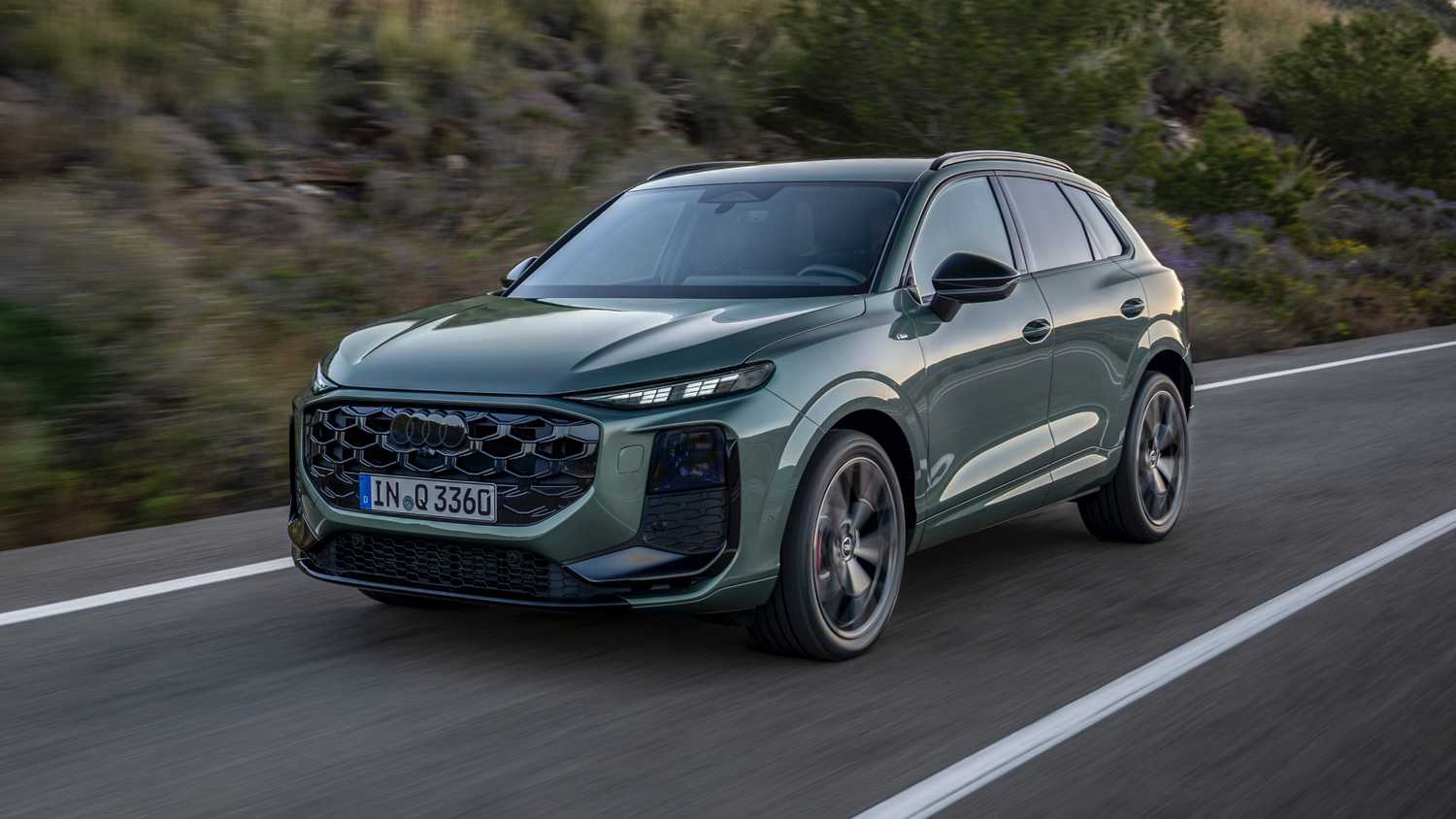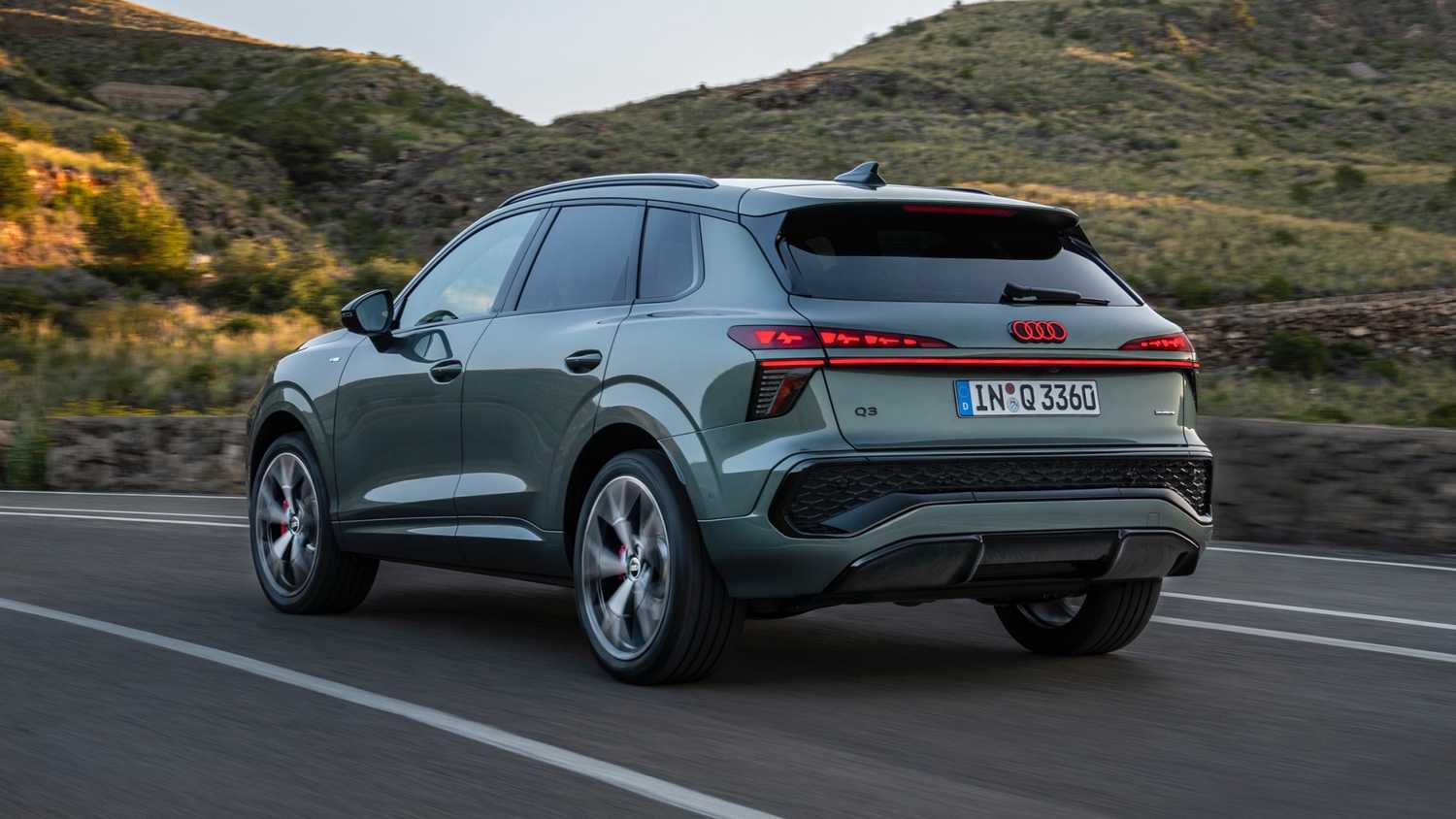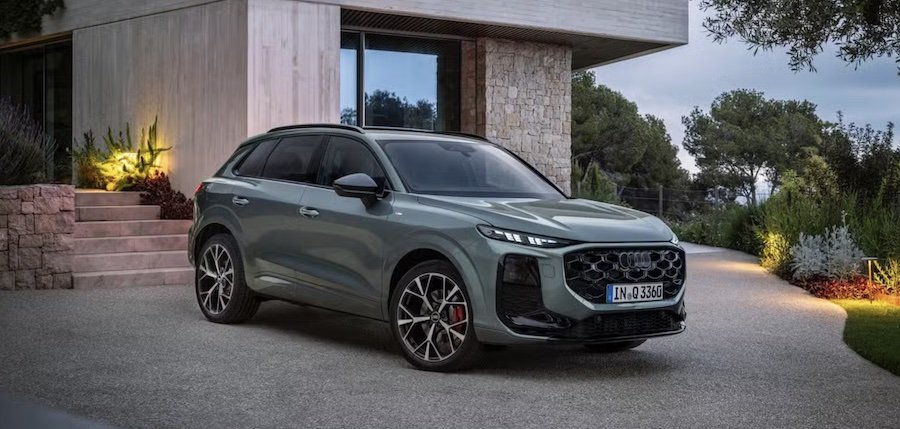Borrowing liberal styling cues from the larger and more expensive Audi Q5 and Q6 e-tron crossovers, the Q3 also brings additional technology to the subcompact luxury crossover segment, and although official details for the U.S. market haven't been confirmed, we can safely assume that the company's entry-level SUV in our market will follow its global sibling's lead in terms of features and powertrains. Let's dig in.
Trendy Audi Styling With A Few Heritage Cues
The most obvious changes to the 2026 Q3 start with the exterior, where it receives the grinning "Singleframe" front-end graphic found on all other modern Audis. Bookended by air curtains in the front bumper corners and sitting above an aggressively styled splitter, the new grille shape has a hexagonal texture and glossy, flat logo within its confines, furthering the visual connection to the Q6 EV and other modern Audis. As is the style of the times, the Q3 also gets LED headlights camouflaged lower in the front fascia, with matrix-design daytime running lights resting up high on the front end.
Around back, there's a slick new taillight design that clearly borrows inspiration from the e-tron GT flagship EV, with a blade-like, split design and a full-width LED light bar. The four interlocking rings that make up the Audi logo are illuminated on the rear, and the roofline looks longer and flatter than it does on the outgoing Q3. As on the new Q5, there's also a floating roof motif with a tailfin-shaped D-pillar. Whether the trendy new styling looks good or bad is a matter of opinion, but there's no denying that the details make the Q3 look like a more expensive car.
The new crossover eschews its predecessor's chiseled bodyside accents and fender surfacing in favor of softer curves, although the Audi-signature box-flare motif over each wheel continues to draw a visual connection to the company's legendary Quattro sport coupes of the 1980s. The wheel arches themselves also get spruced up with a constant-radius character line that visually emphasizes the crossover's wheelbase, helping it look longer and more planted – the outgoing Q3 was a bit obviously front-drive–biased, giving it a downmarket look. The new one can't say the same thing.
Looking past the sleek new skin, the interior of the 2026 Q3 has also been updated. Photos of the cabin are thin on the ground, but the Q3 gets the same oval-shaped steering wheel as its larger crossover siblings, and Audi says it will incorporate a column-mounted gear selector for the first time to free up space in the center console. A wraparound panoramic display incorporates both an 11.9-inch instrument display and a 12.8-inch infotainment touchscreen under a single pane of curved glass, providing the driver with a so-called "digital stage" that wraps around slightly for a cockpit-like feel.
Other techy interior features include an available ambient lighting feature with a laser-cut fabric panel in the front doors that provide larger-scale illumination. Audi will also offer the 2026 Q3 with 12-speaker, 400-watt SONOS audio with preconfigured sound profiles –neutral, concert, lounge, and podcast – and the system will also improve the quality of compressed audio.
Despite what we expect to be a larger vehicle footprint (Audi didn't have specifics at press time), the new Q3 has a slightly smaller cargo area than its predecessor. The SUV offers 17.2 cubic feet of cargo volume behind the rear seat, which now features a sliding and reclining function. Push it forward and place the seatback in its most upright position and cargo space grows to 20.3 cubic feet. Stow the seat flat and you're left with 48.9 cubes behind the first row. That latter number is up nearly a foot over the U.S.-spec 2025 Q3, but seats-up room is actually reduced by at least 3 cubes.
Advanced Powertrains, Reporting For Duty
Audi only revealed powertrains that'll be offered on the global market, but we can probably make a few assumptions nonetheless. The base engine will be a turbocharged 1.5-liter, 148-horsepower four-cylinder with mild-hybrid technology. Given that's less grunt than the American-market Volkswagen Taos, we can probably assume the entry-level mill won't be offered stateside. Far more likely to serve as our base powertrain is a 2.0-liter turbo four that makes 201 hp, incidentally the same powertrain as the recently introduced 2025 Volkswagen Tiguan with which the Q3 shares its MQB Evo platform. Slated for a late introduction in the European market is a 261-hp variant of the same engine, but given the Tiguan SEL R-Line Turbo makes 268 horses, we suspect we'll get that state of tune instead.
Finally, Audi will offer the Q3 with a plug-in hybrid powertrain, which bundles a 114-hp electric motor with an unspecified gasoline powertrain for a total of 261 ponies – doing a little math leads us to presume the internal combustion part of the formula will be a light-pressure 2.0 turbo or perhaps the high-output, 174-hp 1.5-liter found in the Taos. A 25.7-kilowatt-hour battery makes its way into the e-hybrid, giving the Q3 an estimated 75 miles of all-electric range on the optimistic WLTP scale – if it comes to the U.S., expect the PHEV to do a still impressive 55 or 60 miles per charge before the gas engine kicks on.
Audi didn't cop to specific numbers, but the MQB Evo platform upon which the new Q3 rides is stiffer and lighter than its MQB predecessor, meaning we think the new compact crossover should shed some pounds just like its Tiguan cousin did when it was redesigned. The more advanced architecture also means better driver assistance features, including assisted lane changes and driver emergency intervention, which guides the Q3 to a shoulder if the person behind the wheel becomes unresponsive.
Coming This Fall To Germany, Globally Later
Audi said the 2026 Q3 would launch in its native German market and other European locales in October, with order books opening up this summer for the Hungarian-built crossover. The base, 148-horsepower Q3 will carry a German starting price of 44,600 euros including the 20 percent value-added tax (about $51,600 at current exchange rates). The flagship Q3 SUV e-hybrid will demand 49,300 euros ($57,100), while the later-availability 2.0-liter turbo models will fill in the gaps between.
U.S. pricing and availability are as yet unconfirmed, as are Audi's import plans for the Q3. Given the constantly changing tariff guidelines for European-built cars, it's possible the future American-market Q3 will cost more than the $39,800 of the 2025 model – possibly $47,000 or more. That's pure speculation at this point, however, and when it does arrive, the 2026 Q3 promises a lot more tech, style, and efficiency to help compensate.





